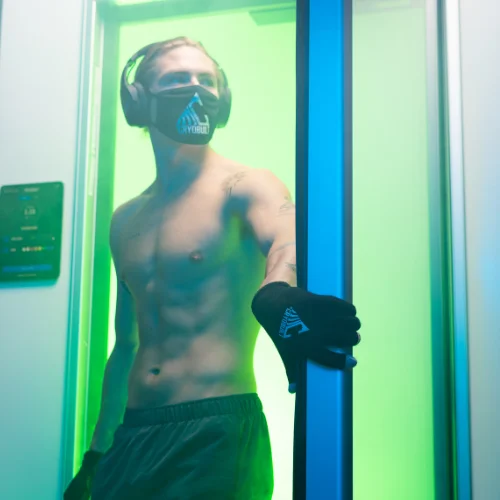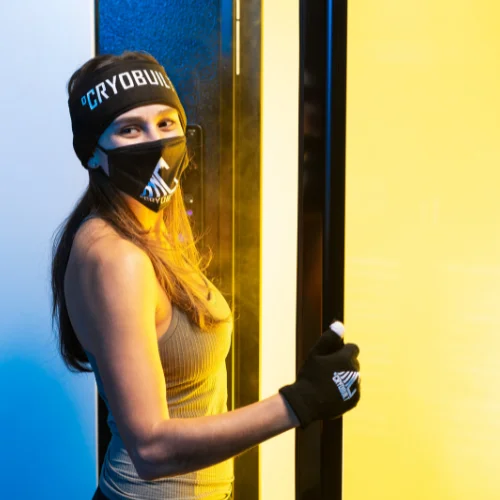Is Cryotherapy Good for the Elderly?
As the years go by, new health trends pop up left and right, promising incredible benefits and improved well-being. One such trend that has gained popularity in recent times is cryotherapy. But hey, hold on a minute! Before you get your elderly loved ones jumping into freezing cold chambers, let’s take a closer look and see if cryotherapy is actually a good idea for our seniors.
Understanding Cryotherapy and How it Works

First things first, what exactly is cryotherapy? Well, it’s not some sci-fi concept from a futuristic movie. Cryotherapy is a treatment that involves exposing the body to extremely cold temperatures for a short period. This can be achieved through various methods, like whole-body cryotherapy (WBC) in a specialized chamber or localized cryotherapy for specific areas.
The idea behind cryotherapy is that the sudden drop in temperature stimulates the body’s natural healing processes, reduces inflammation, and may even boost energy levels. Sounds interesting, right? But, let’s not jump to conclusions just yet.
Potential Benefits of Cryotherapy for Seniors
Now, let’s talk about the potential benefits of cryotherapy for the elderly. One of the main claims is that cryotherapy can help alleviate joint pain and reduce inflammation associated with conditions like arthritis. Some seniors may find relief in this cold therapy, and there are anecdotal stories of people experiencing improved mobility and less pain after undergoing cryotherapy sessions.
Additionally, proponents argue that cryotherapy can boost circulation and help seniors feel more invigorated. Improved circulation is essential for overall health, and it might even lead to better cognitive function and heart health.
The Risks and Challenges for Elderly Individuals

While the potential benefits might sound tempting, we can’t ignore the potential risks and challenges that come with cryotherapy for seniors. The most obvious one is the extreme cold itself. The elderly have a reduced ability to regulate their body temperature, making them more susceptible to hypothermia or frostbite.
Moreover, for seniors with pre-existing health conditions such as cardiovascular issues or respiratory problems, sudden exposure to freezing temperatures can be dangerous. We want to improve their health, not put them at risk!
Lack of Concrete Scientific Evidence
Alright, let’s take a step back and talk about science. While there are anecdotal stories and a few studies suggesting potential benefits, the scientific evidence supporting cryotherapy’s effectiveness for seniors remains limited. Most studies have focused on young and healthy individuals, so it’s unclear how these findings apply to the elderly.
To make informed decisions, we need more research specifically targeting the elderly population. Until then, it’s best to be cautious and not blindly follow trends without proper evidence to back them up.
Alternatives to Cryotherapy for Senior Wellness
Now, just because cryotherapy might not be the best option for seniors, it doesn’t mean we should abandon the pursuit of better health and well-being. There are plenty of safer alternatives that can benefit our elderly loved ones.
For instance, regular low-impact exercises like walking, swimming, or gentle yoga can help with joint pain and overall mobility. Additionally, heat therapy, such as warm baths or heating pads, can also provide relief for achy joints without the risks associated with cryotherapy.
The Importance of Consulting Healthcare Professionals
Before considering any new treatment, including cryotherapy, seniors need to consult their healthcare professionals. Each individual’s health status is unique, and what works for one person might not be suitable for another.
Healthcare professionals can assess their patient’s medical history, pre-existing conditions, and overall health to determine whether cryotherapy or any other treatment is safe and beneficial.
What exactly happens during a cryotherapy session, and how does it benefit the elderly?

During a cryotherapy session, the individual is exposed to extremely cold temperatures for a short period, typically ranging from 2 to 4 minutes. The most common form of cryotherapy is whole-body cryotherapy (WBC), where the person stands in a specially designed chamber that pumps super-cooled air, usually around -100°C to -150°C. The sudden drop in temperature triggers a natural response in the body, leading to several beneficial effects.
Firstly, cryotherapy stimulates the release of endorphins, which are the body’s natural feel-good hormones. This can result in an improved mood and reduced feelings of anxiety or stress. Imagine stepping out of a cryotherapy chamber with a sense of euphoria, similar to the feeling after a strenuous workout or a good laugh with friends.
Secondly, cryotherapy can alleviate pain and inflammation, making it particularly beneficial for the elderly, who may experience joint pain or arthritis. The extreme cold constricts blood vessels and reduces blood flow to certain areas, which helps in reducing inflammation and swelling. Athletes often use cryotherapy to recover from injuries, as it speeds up the healing process.
For older individuals with chronic pain issues, cryotherapy can offer a drug-free alternative for pain management, potentially improving their overall quality of life.
Furthermore, cryotherapy can enhance circulation and boost the body’s natural healing mechanisms. As the body is exposed to the cold, blood is redirected to vital organs, increasing oxygenation and nutrient supply to these areas.
Once the person exits the cryotherapy chamber and returns to normal temperatures, the enriched blood rushes back to the extremities, promoting healing in those areas. Improved circulation is particularly beneficial for the elderly, as it can aid in maintaining cardiovascular health and preventing conditions like varicose veins.
In addition to physical benefits, cryotherapy may also improve cognitive function and sleep patterns in the elderly. The surge of endorphins and the general feeling of well-being after a cryotherapy session can lead to better sleep, which is crucial for overall health and mental acuity. Enhanced sleep can help older individuals feel more rested, focused, and mentally sharp during the day.
It is essential to note that cryotherapy is generally safe, but precautions should be taken, especially for the elderly. The session’s short duration and controlled environment reduce the risk of adverse reactions, but older individuals must consult with their healthcare providers before trying cryotherapy. Additionally, cryotherapy should not be used as a substitute for medical treatments, but rather as a complementary therapy to support overall well-being
Can cryotherapy help with age-related issues like muscle stiffness and reduced mobility?

Cryotherapy, the use of extremely cold temperatures for therapeutic purposes, has gained popularity in recent years for various health and wellness applications. While it is not a panacea, it shows promise in addressing some age-related issues, such as muscle stiffness and reduced mobility.
By subjecting the body to sub-zero temperatures, cryotherapy can help alleviate inflammation and promote blood flow, which may lead to improved muscle flexibility and joint mobility.
One of the primary benefits of cryotherapy is its ability to reduce inflammation in the body. As we age, chronic inflammation can contribute to muscle stiffness and joint discomfort. Cryotherapy works by constricting blood vessels and subsequently dilating them upon the session’s completion.
This process is believed to flush out inflammatory markers and promote the release of anti-inflammatory cytokines. By reducing inflammation, cryotherapy may provide relief from age-related muscle stiffness, making it easier for individuals to move and engage in daily activities.
Moreover, cryotherapy’s impact on blood flow can be beneficial for age-related mobility issues. The sudden cold exposure during a cryotherapy session causes vasoconstriction, which redirects blood flow away from extremities to protect vital organs.
Upon exiting the cryotherapy chamber, the body experiences vasodilation, where blood vessels expand, leading to increased blood flow throughout the body. This improved circulation can aid in nutrient delivery and waste removal in muscles and joints, potentially enhancing overall mobility and range of motion.
While cryotherapy can offer promising results, it is essential to view it as a complementary therapy rather than a standalone solution. For individuals with age-related mobility issues, incorporating cryotherapy into a holistic approach that includes regular exercise, stretching, and possibly physical therapy is crucial. This multifaceted approach addresses various aspects of muscle stiffness and reduced mobility and may yield more significant and lasting benefits.
Is localized cryotherapy a safer option for seniors compared to whole-body cryotherapy?
Localized cryotherapy and whole-body cryotherapy are both popular therapeutic techniques that involve exposing the body to extreme cold temperatures for a short duration. When it comes to seniors, safety is a paramount concern. In this regard, localized cryotherapy generally proves to be a safer option compared to whole-body cryotherapy.
Localized cryotherapy targets specific areas of the body, applying cold to those regions only. This localized approach allows seniors to focus on particular problem areas, such as joint pain or muscle stiffness, without subjecting their entire bodies to the intense cold.
For instance, if a senior has arthritis in their knee, localized cryotherapy can be applied directly to the affected knee joint, potentially reducing inflammation and pain. By targeting specific areas, there is a reduced risk of potential complications that may arise from exposing the whole body to extreme cold.
On the other hand, whole-body cryotherapy involves immersing the entire body in a cryotherapy chamber, typically for a few minutes. While it is popular among athletes and individuals seeking overall rejuvenation, it may not be the best choice for seniors due to certain risks. Seniors might be more susceptible to extreme temperatures, and sudden exposure to such cold conditions could potentially lead to adverse reactions.
For example, seniors with cardiovascular issues might experience a sudden increase in blood pressure as their bodies try to cope with the extreme cold, possibly posing a risk to their health.
Moreover, localized cryotherapy devices offer a higher level of control over the temperature and duration of exposure. This level of control enables healthcare providers to tailor the treatment to each senior’s specific needs and health condition.
For seniors with delicate skin or circulation issues, the ability to adjust the temperature and treatment time becomes particularly crucial. Localized cryotherapy devices also come in various forms, such as cryotherapy wands or ice packs, which are easier to handle and target specific areas safely.
Conclusion – To Freeze or Not to Freeze?
So, here we are, weighing the pros and cons of cryotherapy for seniors. While the idea of rejuvenation through cryotherapy might sound enticing, we must prioritize safety and evidence-based practices when it comes to our elderly loved ones.
While some individuals may find relief and benefits from cryotherapy, the risks and lack of concrete scientific evidence for seniors raise significant concerns. Until further research provides clearer answers, it’s safer for our elderly population to explore other avenues of wellness.
In the end, the decision to freeze or not to freeze should be made thoughtfully and in consultation with healthcare professionals who have their best interests at heart.
But hey, what do you think about cryotherapy for seniors? Have you or your loved ones tried it? We’d love to hear your thoughts and experiences in the comments section below. Let’s spark a conversation and share our knowledge!
